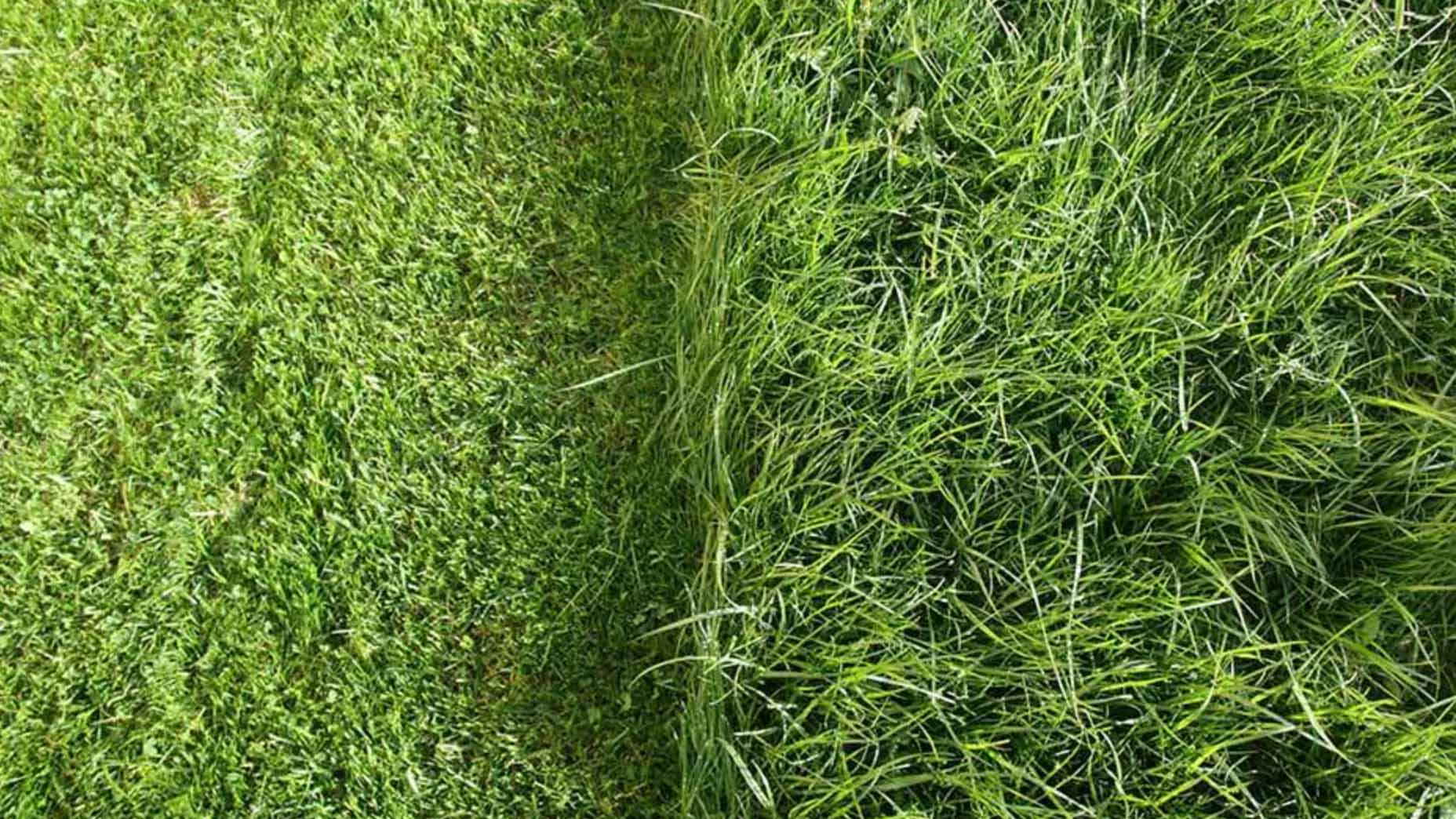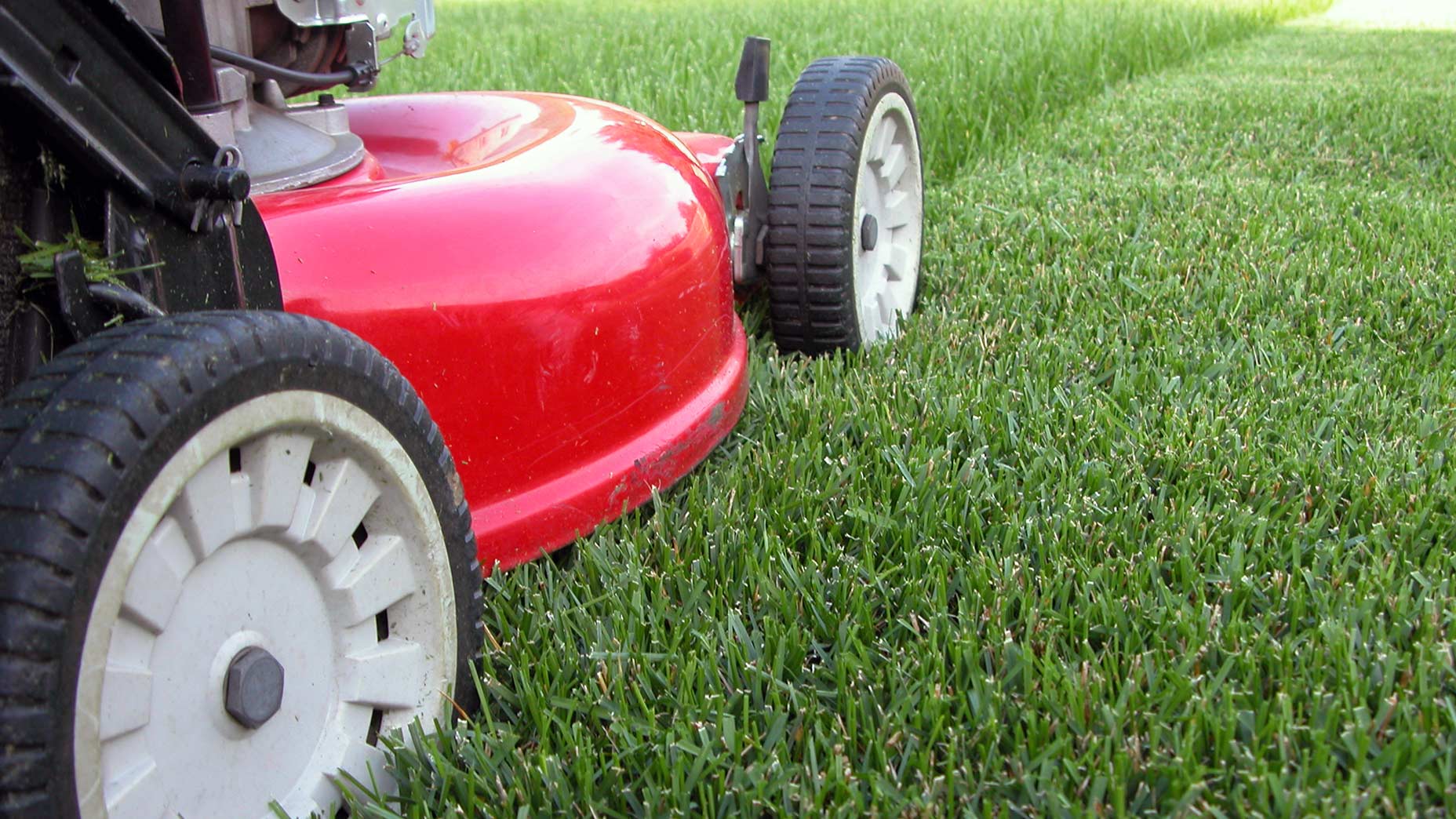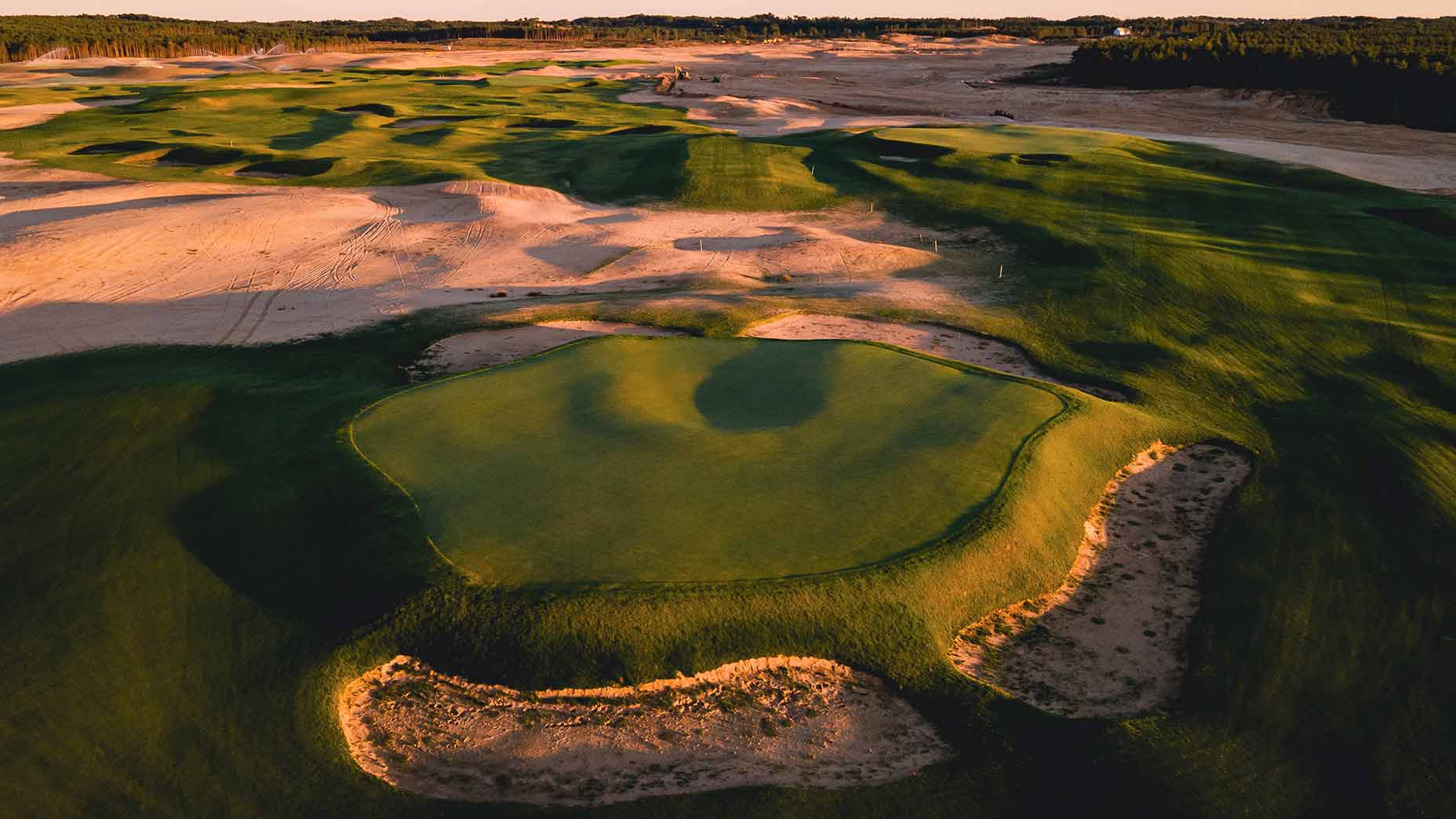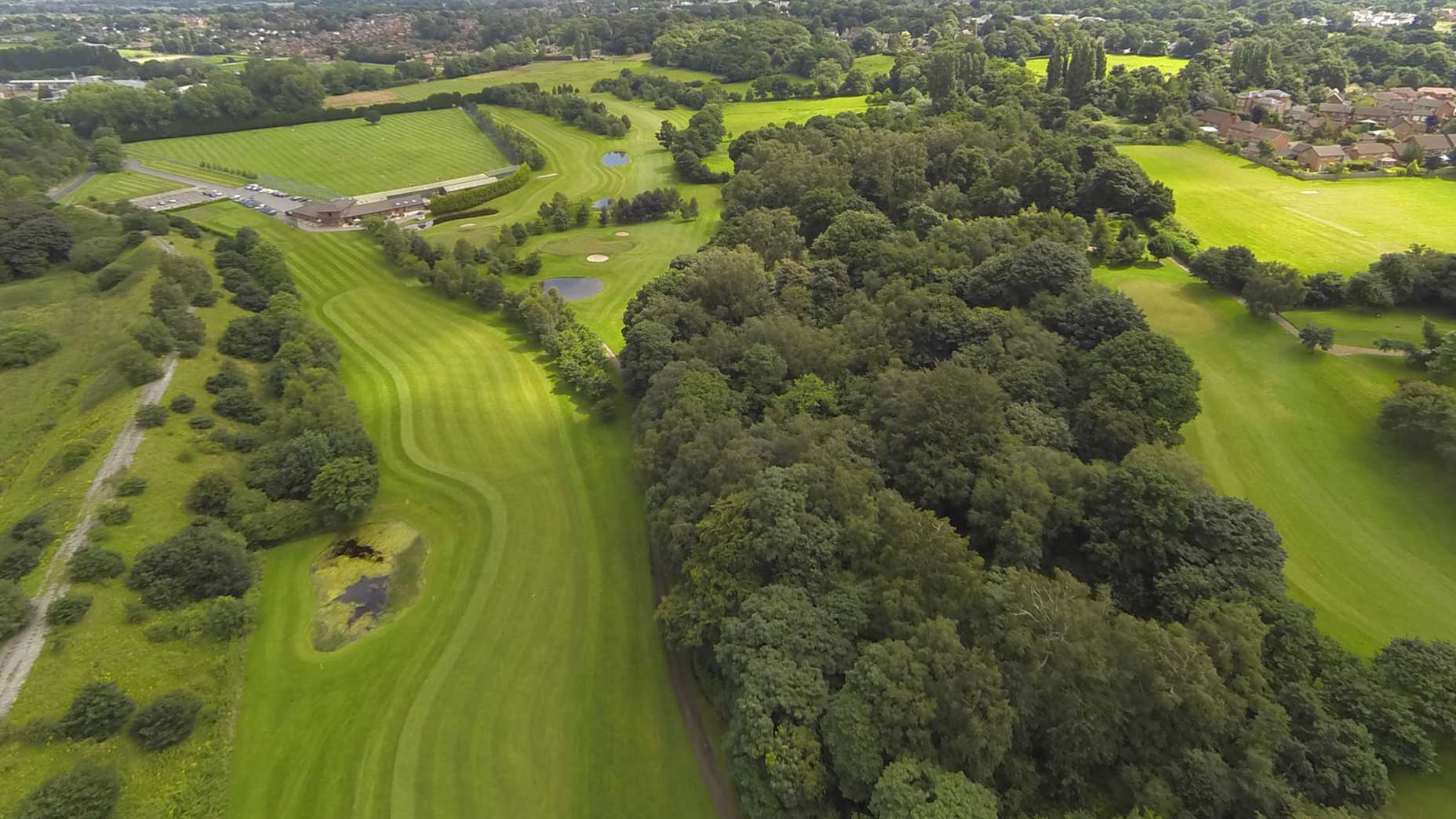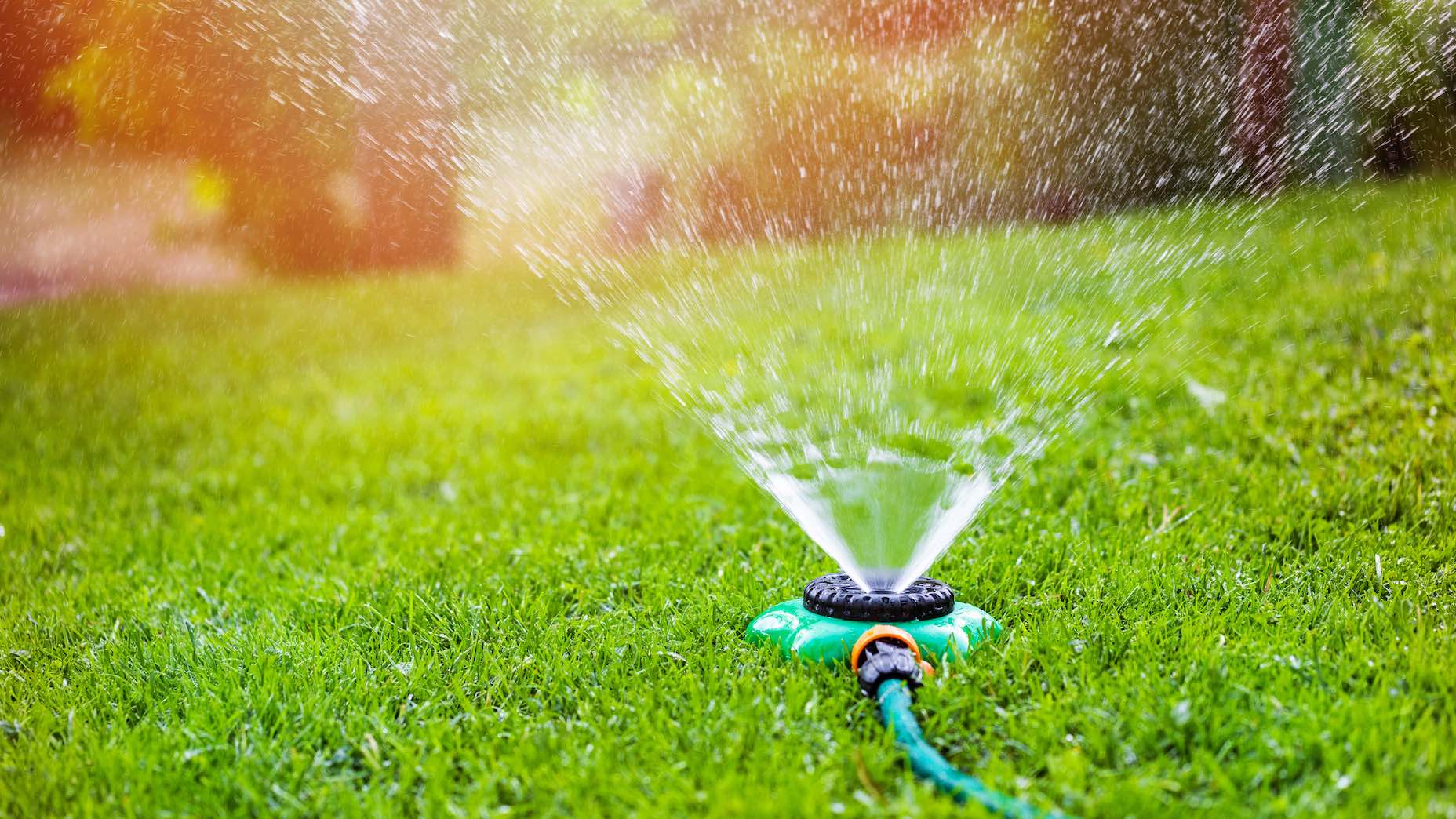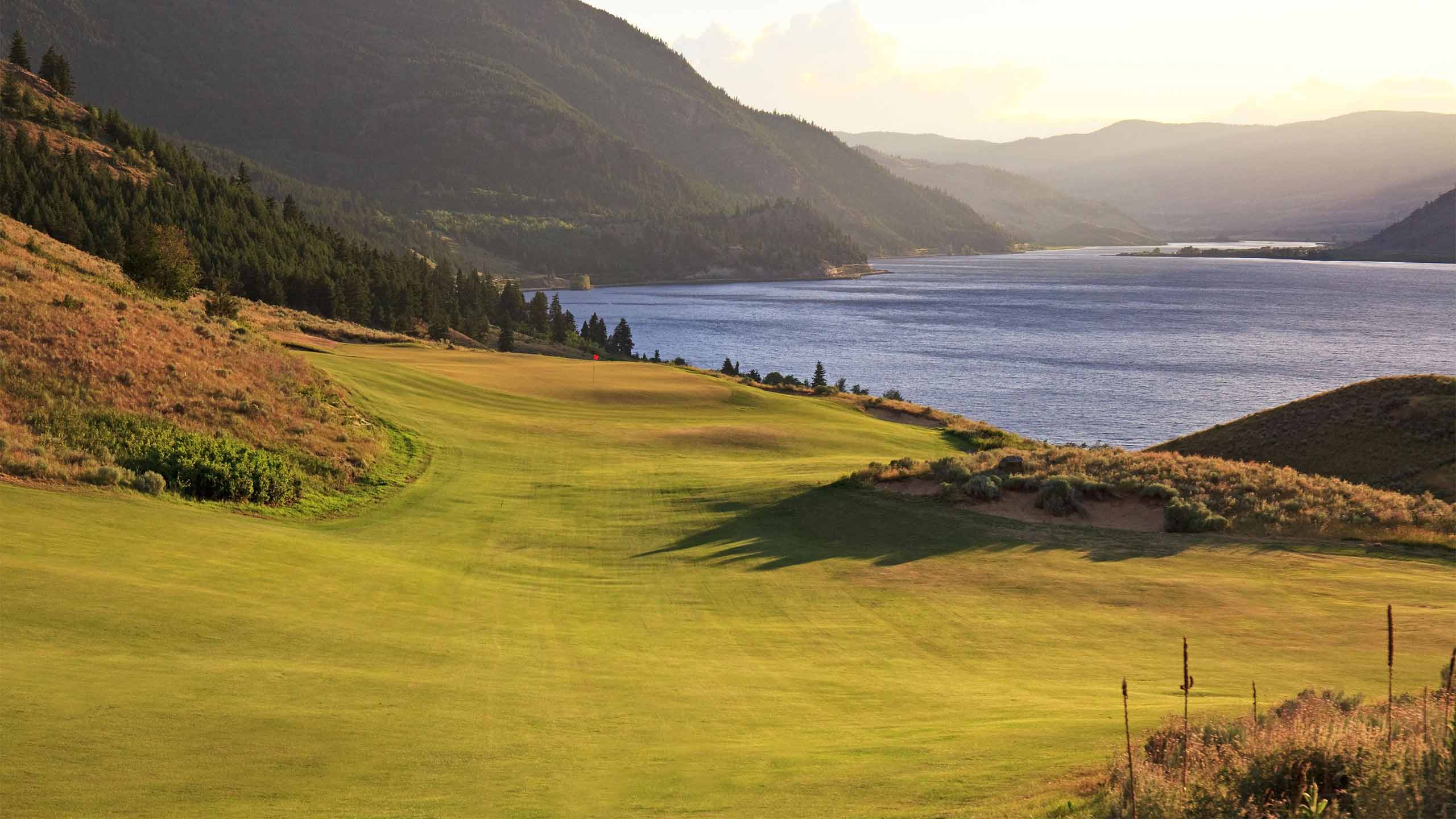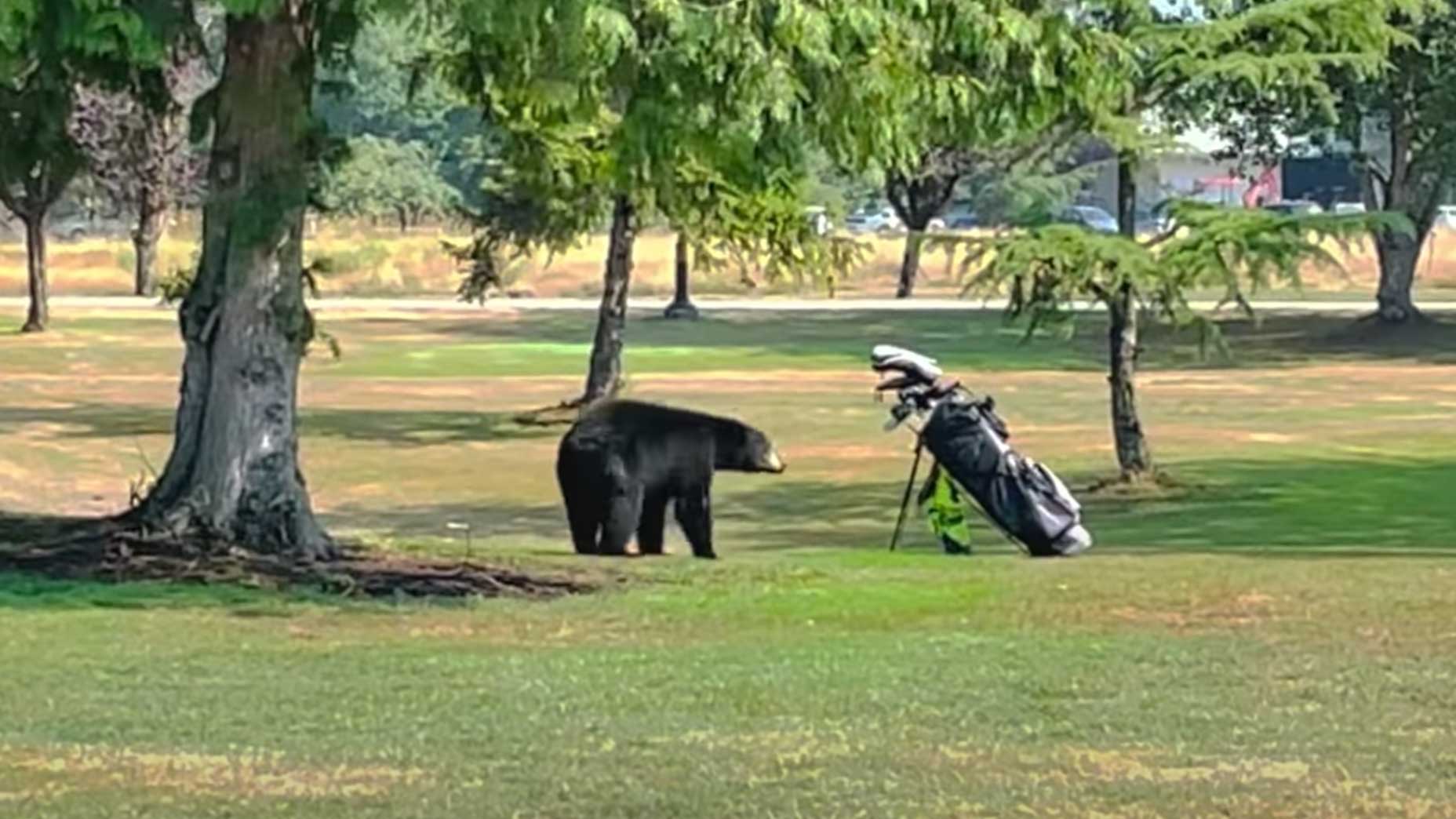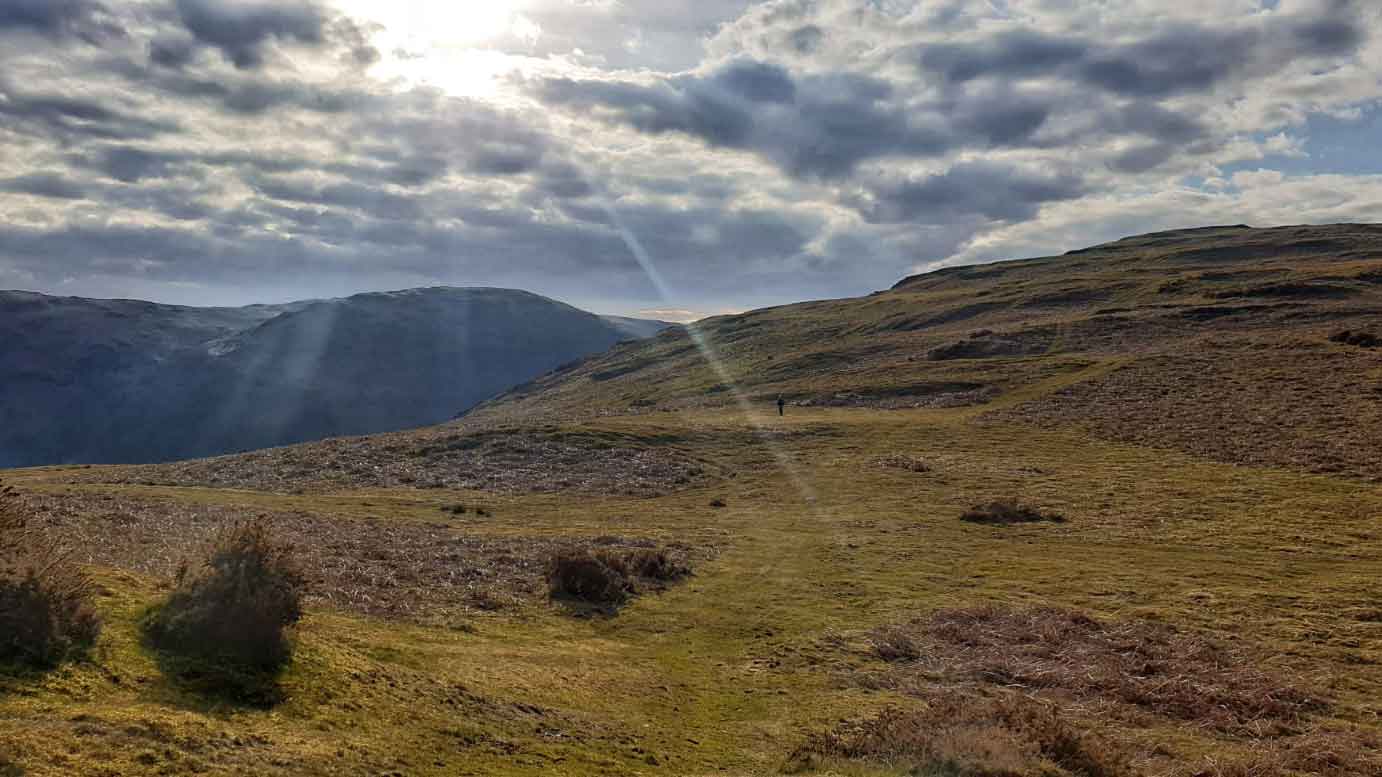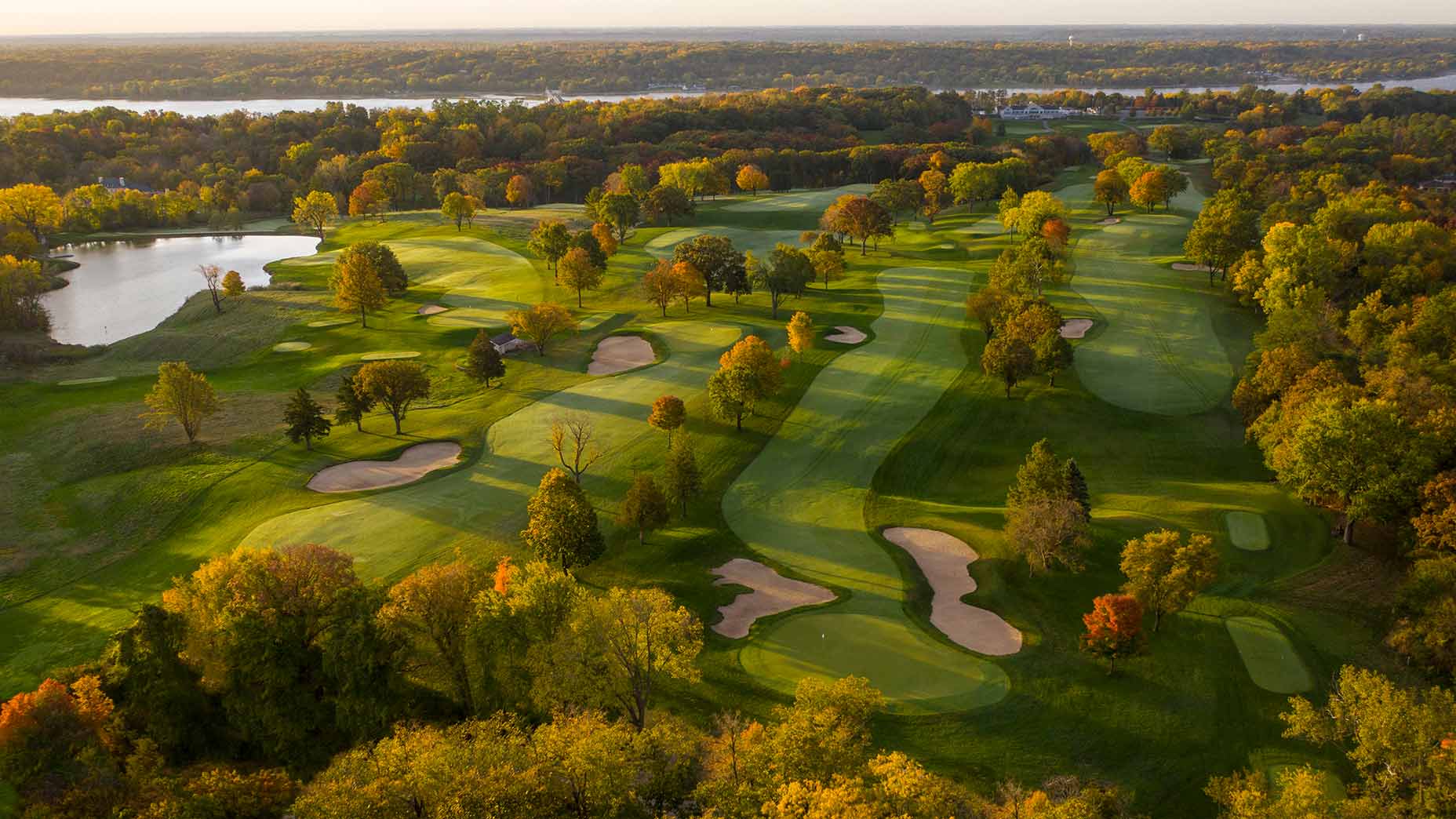Why golf courses put sand on greens (and why you might want to sand your own yard)
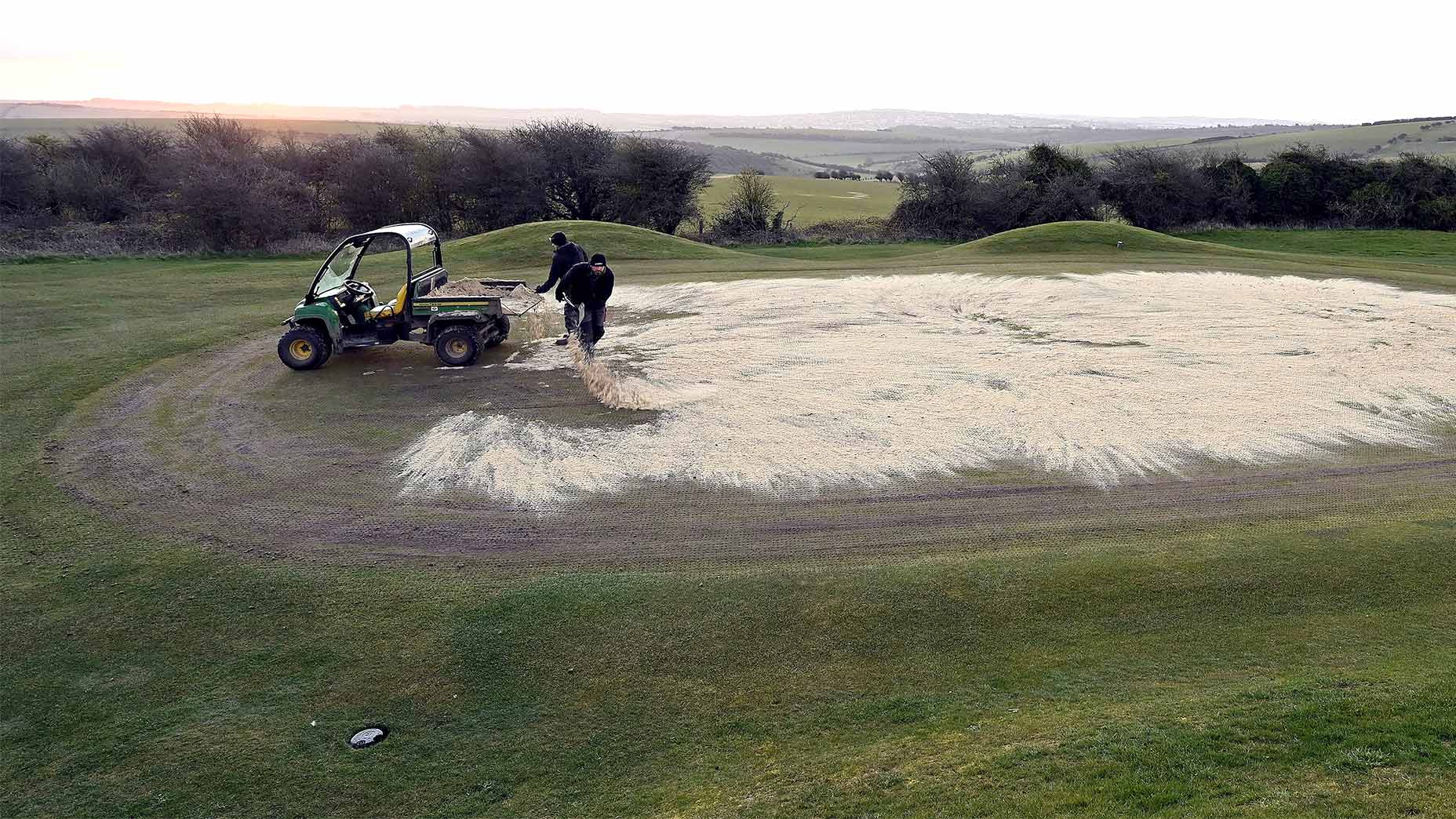
What exactly does all of that sand do to help greens anyway?
Getty Images
Ed. note: Welcome to Super Secrets, a new GOLF.com series in which we’re picking the brains of the game’s leading superintendents. By illuminating how course maintenance crews ply their trades, we’re hopeful we can not only give you a deeper appreciation for the important, innovative work they do but also provide you with maintenance tips that you can apply to your own little patch of paradise. Happy gardening!
Raise your hand if this has happened to you: you show up at a golf course, expecting to find it in pristine condition, only to discover that the greens have been sanded.
Bummer, right? Yes, it is. But think of the big picture. Not everything is always just about you. Superintendents don’t sand putting surfaces simply to annoy you. They do it for the long-term health of the greens. That’s the gist.
But since you’ve been inconvenienced, you deserve to know precisely why. What, in particular, are the benefits of sanding? How, exactly, does it work?
Let’s get into some of the, um, granular details, with help from Jimmy Kidd, former superintendent of Gleneagles, in Scotland, and founder of the Scottish Greenskeepers Association.
For starters, Kidd says, sanding helps break up thatch, a layer of organic material that builds up over time in the upper root zone. Too much of that stuff is not a good thing. If levels of thatch exceed roughly a half-inch, Kidd says, “the greens will suffer during extremes of drought and wet periods.” The ill effects can vary. The green might get spongy, or develop brown spots, or become vulnerable to scalping during mowing. Sanding helps protect against all that.
That’s not all, Kidd says. Sanding also improves drainage and helps level out the green, creating smooth, consistent putting surfaces, and firm, fast conditions year round. For all of those reasons, Kidd says, superintendents “willy lightly apply dustings of sand throughout the season.”
As you can probably see, there’s a science to sanding, and on golf courses today, Kidd says, that science is “very precise.”
When you sand and how much sand you use is critically important. Sand too heavily at the wrong time of year, and you risk a range of problems. It’s best to do the work in good weather, Kidd says. In inclement conditions, you might wind up smothering the grass or creating fungus diseases that diminish the quality of the turf.
Oh, and you’ve got to use the right kind of sand.
Construction sands, for instance, are a no-no, Kidd says. They’re made up of angular particles that are meant “to provide strength and structure.” That’s good for buildings, but bad for grass, as the sand binds together, reducing the air and water flow needed for healthy root growth.
Golf course sands are different. They are made of round particles “resembling a bucket of balls with large pore spaces between each ball,” Kidd says. They promote good drainage, and healthy air and water circulation.
Traditional links courses are generally constructed with local windblown sands, which, Kidd says, “are more often than not utilized in future top dressing programs,” provided their salt content isn’t too high.
Most greens these days are constructed to United States Golf Association specifications, and it’s critical, Kidd says, that the materials used for sanding conform to the original construction sands. Using the wrong sand, Kidd says, can adversely effect the movement of water and nutrients upwards and downwards through the root zone.
As every serious golfer knows, greens are often sanded and punched, or aerated, at the same time. That’s not always necessary, Kidd says. If the goal is merely to level the green, a simple topdressing will suffice. Aeration comes in when soils are heavily compacted or the turf is thick with thatch. The greens get punched and sanded, and the sand is worked into each aeration hole to improve air and water flow, giving the roots a better chance to drink and breathe.
There is, of course, plenty more to the science of sanding. But those are some of the basics. And while caring for home lawn requires less precision than tending to a green, many of the same principles apply.
Depending on how you use your own yard, you might never want or need to sand it. But if you do, be sure to use the right sand, in the right amounts, at the right time. If the soil is heavy, you might need to aerate to keep your turf healthy. The staff at a respected lawn care store should be able to help you make smart choices.
You might not wind up with a patch of grass as pure as a putting green, but you’ll have a pretty sweet place to chip and pitch.


